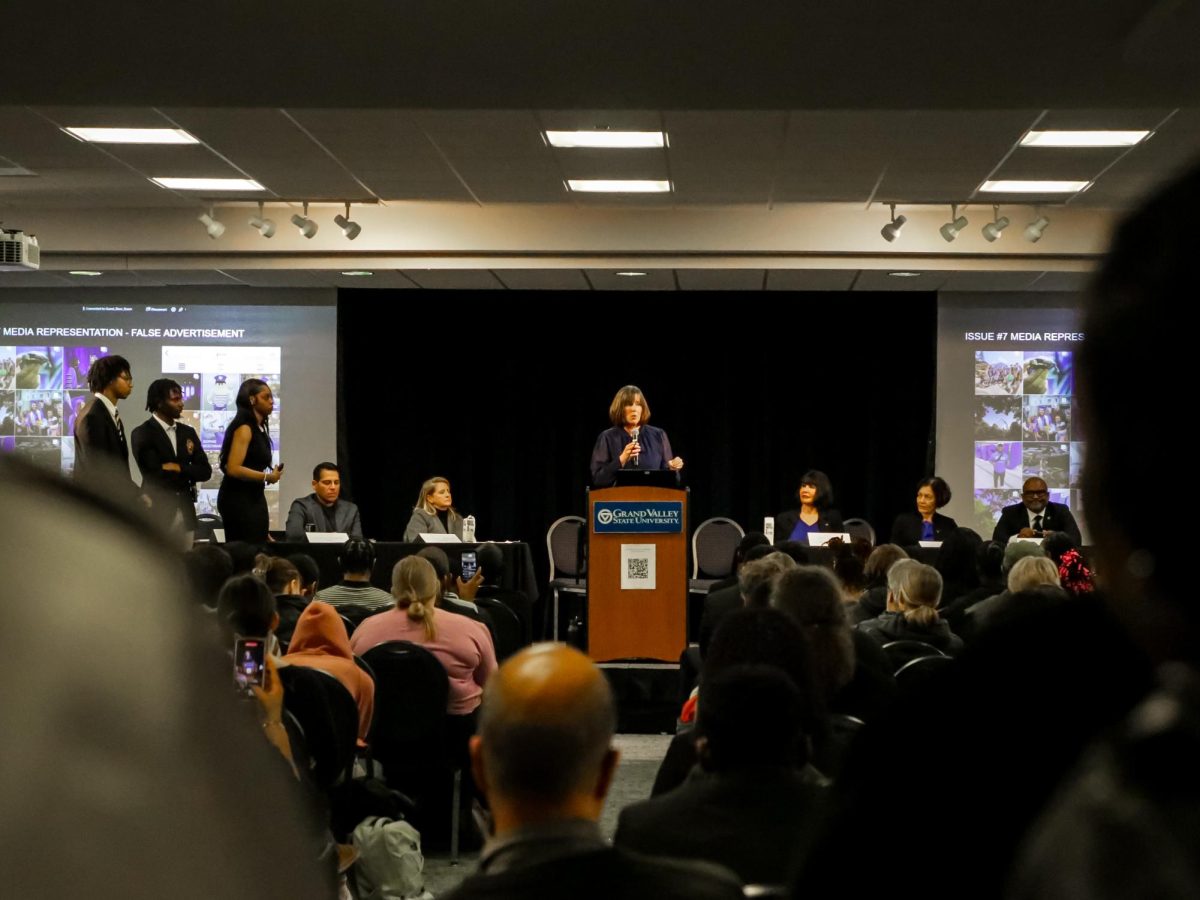Limited funds leave club sport athletes to foot the majority of the bill

GVL / Nathan Mehmed Bob Stoll, Grand Valley’s Director of Student Life
Apr 29, 2011
With a $358,000 operating budget and 48 different teams and clubs to support, the Grand Valley State University Office of Student Life has to make due with what it has.
While the OSL, which is supports each of GVSU’s 48 different athletic club teams, ranging from the undefeated GVSU men’s lacrosse club to the Brazillian Jiu Jitsu club, is able to help each team cover a part of their overall budgets, it hardly garners enough to make a significant dent in the total costs.
Therefore, those who choose to play cover the rest with dues, which can range anywhere from $10 to a few thousand dollars. This is the case with almost all university club sports programs, and Laker athletes competing at the club level are no different.
“It’s always a pay-to-play system,” said Bob Stoll, GVSU director of Student Life. “Anyone involved with those organizations are going to pay dues, pay for their operating costs and things like that.”
Each team is allocated a certain amount of money from the Student Senate. The totals vary vastly – some teams receive no funding while others receive tens of thousands of dollars. For example, the GVSU rowing club is slated to receive $51,813 during the 2011-2012 school year.
“The funding from student government usually subsidizes facility needs because we don’t have ice for hockey players or a place to do gymnastics,” Stoll said. “There’s a whole process where they allocate it out to the different councils, and the councils allocate it out to different clubs or teams for operations or facilities. The other part goes to support a lot of part-time coaches.”
But for clubs like rowing, a little more than $50,000 does not come close to covering the total cost of a team of 94 rowers, some boats, rental of the GVSU Boathouse, travel to regattas and a handful of coaches. So teams have to fundraise through efforts such as the GVSU Rent-a-Rower program, or pay out-of-pocket.
Teams that have limited travel schedules or low facilities costs do not have large operating budgets. However, for others like rowing – which has traveled down to Florida twice and Boston once already this academic year – and GVSU’s three hockey teams – which have to pay around $200 an hour for ice-time – costs accrue quickly.
GVSU senior Ashley Rumsey, who has played four years on the Lakers women’s hockey team, estimates she has spent almost $9,000 to play hockey at GVSU, which does include a trip to Universiade in Turkey this year as a member of Team USA.
Players like Rumsey usually take out loans or get help from hom, and look at the cost as just another expense of a college student.
“I first use the money I save from work over the summer, then the loan money, then my parents help if I’m still short,” said Rumsey, who is GVSU’s all-time leader in goals scored with 82. “Personally my parents have been a huge support system for me, and without them I definitely wouldn’t be able to play.”
The annual cost for a hockey player at GVSU is around $1,500 per season, and sometimes students cannot afford to continue to play and go to school.
“There have been a few girls that have dropped out because they haven’t been able to pay dues,” Rumsey said. “It is really hard on the team to have someone drop out midseason because we are counting on the rest of their payments to make it through the season.”
For athletes, it becomes a matter of weighing costs and setting priorities. Some students cannot make payments and have to leave the game while others choose to give up the sport to focus on school or work.
“It is expensive, but it is part of what a student wants to get out of their college experience,” Stoll said. “If sport is one of those things that you had in your life up until now, to come to a university environment like this with state-of-the art facilities, it really works out well for most.”
And in a world of tuition increases, 18-credit schedules and part-time jobs, student-athletes have to make the decision if the time, money and energy invested are worthwhile.
“I’ve had so much fun and really developed as an athlete while playing at GV,” Rumsey said. “Testing yourself at the college level is really rewarding, and you really push yourself to be the best because you are competing against the best. I would definitely say that it has been worth it.”






















